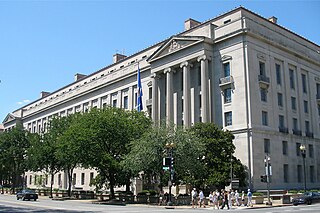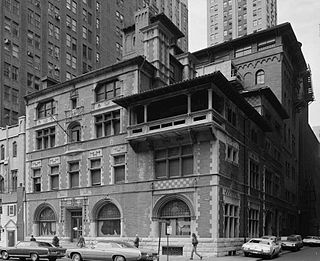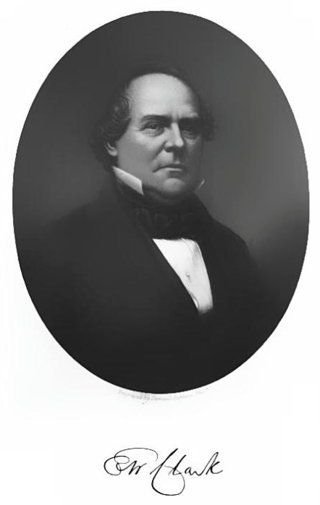Life
Clarence was born in Philadelphia, the son of Alfred Zantzinger (1839-1873) and Sarah Crawford Clark.
Alfred was a medical doctor who was born on June 27, 1839, in Philadelphia to George Zantzinger, a grand-nephew of David Rittenhouse, [1] and Caroline Helmuth. [2] Alfred entered the University of Pennsylvania in 1855, graduated from Philadelphia's Hahnemann Medical College in 1862, [2] and became a volunteer surgeon with the First Troop Philadelphia City Cavalry. [3] In January 1863, Alfred married Sarah Crawford Clark, the daughter of Philadelphia financier Enoch White Clark. [2] When their son was born in 1872, they named him for Sarah's brother Clarence Clark.
Alfred died of typhoid in Philadelphia on August 15, 1873. [4] Sarah later married C. George Currie, a rector of St. Luke's Church in Philadelphia. [5]
Clarence attended private school in Germany, then St. Paul's School in Concord, New Hampshire. He matriculated at Yale University's Sheffield Scientific School, where he was a member of the senior S.S.S. Society [6] and graduated with a degree in civil engineering in 1892. Three years later, he earned a B.S. in Architecture at the University of Pennsylvania. He then spent two years at the Ecole des Beaux-Arts in Paris, where he worked under Paul Blondel and Henri Grisors and graduated in 1901. [7]
He returned to Philadelphia, set out his shingle, and soon received his first commission: a building to house the West Philadelphia branch (today, the Walnut Street West branch) of the Free Library of Philadelphia. [8] By 1905, he and Charles L. Borie, Jr. (a fellow graduate of St. Paul's School) had launched a firm of their own with offices at 251 South 4th Street in Philadelphia. They were joined in 1910 by Milton Bennett Medary, and the firm was renamed Zantzinger, Borie & Medary, which specialized in institutional and civic projects. [7]
In 1903, Zantzinger joined the American Institute of Architects; eight years later, the group made him a fellow. He served for years on the group's National Committee on Foreign Relations and Education; he also served as president of the Philadelphia chapter. Zantzinger was also a member of the T-Square Club; he directed its atelier and served on its education committee. [7]
In 1906, he was elected to the board of directors of the Pennsylvania Academy of the Fine Arts. [9]
In 1917, Zantzinger became a diplomat: President Woodrow Wilson appointed him to represent the U.S. on the War Trade Board in Sweden as a member of the U.S. legation in Stockholm. [7]
He also served on the National Capital Parks and Planning Commission and as president of Philadelphia's City Parks Association. [7]
In 1951, he retired from his firm, by then renamed Zantzinger & Borie. [10]
Family
In 1903, Clarence married Margaret Shippen Buckley (d. Jan. 16, 1958 [14] ), [10] part of a prominent Philadelphia family that descended from John Buckley (1664-1732), of Wiltshire, England, who in 1681 became one of the first people to purchase land in the colony of Pennsylvania from William Penn. [15] She was a daughter of iron manufacturer Edward Swift Buckley [15] and granddaughter of Matthew Brooke Buckley (1794-1856), [16] a president of the Philadelphia, Wilmington and Baltimore Railroad from 1842 [17] to 1846. [18] [19] Matthew was the son of Daniel Buckley (1761-1827), a lawyer and former member of the Assembly of Pennsylvania. [20]
In 1922, Clarence and Margaret lived at "Greenacre", their house at Seminole and Highland Avenues in Chestnut Hill, Pennsylvania. [21]
They had at least four children:
- 1 Clarence Clark Zantzinger Jr. (1904-1993), who followed his father to St. Paul's, Yale, Penn, and the Ecole des Beaux Arts; then joined Zantzinger, Borie & Medary as a draftsman; and finally struck out on his own as an architect. His firm, Kneedler, Mirick & Zantzinger, "designed office buildings, hospitals, churches, museums, schools and houses in the Philadelphia area," according to his New York Times obituary. [22] He served as director or other corporate officer in several organizations, including the Fairmount Park Art Association, for which he served as president from 1969 to 1980. [23] He married Mary Amory Cook, a daughter of Navy Vice Admiral Arthur Byron Cook (1881-1952), an early naval aviator.
- 2 Alfred Zantzinger (1907-1972), who also attended St. Paul's, married Mary Geist in 1937. Alfred worked stints at the E.W. Clark & Co. financial house, the Philadelphia Suburban Water Company, and as vice-president of the Pennsylvania Academy of the Fine Arts. [24]
- 3 Sarah Clark Zantzinger married Harry C. Groome Jr., [25] who went on to become a senior vice-president of N. W. Ayer & Son, the country's oldest advertising agency. [26]
- 4 Mary Vaux Zantzinger (1910-1987), who married John Wister Wurts (1907-1972). [25] Wurts, who lived as a child on Philadelphia's Portico Row, graduated from Princeton University in 1931 [27] and served in Europe during World War II, winning the Legion of Merit. [28]

Paul Philippe Cret was a French-born Philadelphian architect and industrial designer. For more than thirty years, he taught at a design studio in the Department of Architecture at the University of Pennsylvania.
Milton Bennett Medary Jr. was an American architect from Philadelphia, practicing with the firm Zantzinger, Borie and Medary from 1910 until his death.
Hartley Burr Alexander, PhD (1873–1939), was an American philosopher, writer, educator, scholar, poet, and iconographer.

Horace Trumbauer was a prominent American architect of the Gilded Age, known for designing residential manors for the wealthy. Later in his career he also designed hotels, office buildings, and much of the campus of Duke University.
Alfred Geist Zantzinger (April 6, 1936 – February 16, 2007) was an American documentary filmmaker specializing in documentaries about traditional musics of the world. He directed and produced films about the musics of Mozambique, Zimbabwe, Cape Verde, Lesotho, South Africa, and Brittany.

Saint Mark's Episcopal Church is an Episcopal church located at 1625 Locust Street in Rittenhouse Square in Center City Philadelphia. It is part of the Diocese of Pennsylvania.
Zantzinger, Borie and Medary was an American architecture firm that operated from 1905 to 1950 in Philadelphia. It specialized in institutional and civic projects. For most of its existence, the partners were Clarence C. Zantzinger, Charles Louis Borie Jr., and Milton Bennett Medary, all Philadelphians.

The Robert F. Kennedy Department of Justice Building, sometimes called Main Justice, is the headquarters of the United States Department of Justice. It houses Department of Justice offices, including the office of the United States Attorney General. The building was completed in 1935. In 2001, it was renamed after Robert F. Kennedy, the 64th Attorney General of the United States.

H2L2 is an architecture firm in Philadelphia founded in 1907 by Paul Philippe Cret as The Offices of Paul Philippe Cret. In 1923, John Harbeson became Cret's partner, along with William J. H. Hough and William Livingston. In 1925 the firm was joined by Roy Larson. After Cret's death in 1945, the younger partners followed Cret's wishes and removed Cret's name from their masthead, continuing as Harbeson, Hough, Livingston & Larson. In 1976, the firm officially became H2L2 after years of using the name informally. In 2012, H2L2 and NELSON, which was founded in 1977 as an interior design firm, merged to create a full-service architecture/engineering firm.

Frank Miles Day was a Philadelphia-based architect who specialized in residences and academic buildings.
Joseph Sill Clark Sr. was an American tennis player. Clark won the 1885 U.S. National Championship in doubles with partner Dick Sears. He was also the inaugural singles and doubles national collegiate champion, in 1883. When he died in 1956, he was Philadelphia's oldest practicing attorney.
Clarence Howard Clark Sr. was a banker, land owner, and developer in Philadelphia, Pennsylvania. Ten years after his death, The New York Times called him one of the city's "most prominent men of his day."

The Ruth and Raymond G. Perelman Building—originally the Fidelity Mutual Life Insurance Company Building—is an annex of the Philadelphia Museum of Art containing exhibition galleries, offices, conservation labs, and the museum library. It is an Art Deco building that features cathedral-like entrances and is adorned with sculpture and gilding. The building is listed on the National Register of Historic Places. The Perelman Building is located at the intersection of Pennsylvania Avenue and Fairmount Avenue, facing the Philadelphia Museum of Art's main building across Kelly Drive.

Enoch White Clark was the founder of E. W. Clark & Co., a prominent financial firm based in Philadelphia, Pennsylvania, that helped the U.S. government finance the Mexican–American War. In 1857, Clark was listed as one of Philadelphia's 25 millionaires.
Dominique Berninger (1898–1949) was a French-born American architect based in Jenkintown, Pennsylvania, United States, who practiced nationally in the mid twentieth century but particularly in Pennsylvania. He is best known for his design of the French Pavilion for the New York World's Fair of 1939. Together with Louis Kahn, he founded the short-lived Architectural Research Group (ARG) in Philadelphia. He was a partner in the firms of Carswell, Berninger & Bower, Berninger & Bower (1935-1945) and Berninger, Haag & d'Entremont (1946)
The Architectural Research Group (ARG) was an association of mostly young architects in Philadelphia, Pennsylvania, established in 1932 by Louis Kahn and Dominique Berninger "for the group study of Housing and Slum Clearance." Berninger acted as its president during the whole of the group's brief existence, 1932 to 1935. Until 1932, both founders were employed by the Philadelphia firm of Zantzinger, Borie & Medary, with Kahn working on their U.S. Department of Justice Building in Washington, D.C.

Nicola D'Ascenzo was an Italian-born American stained glass designer, painter and instructor. He is best known for creating stained glass windows for the Washington Memorial Chapel in Valley Forge, Pennsylvania; the Nipper Building in Camden, New Jersey; the Loyola Alumni Chapel of Our Lady at Loyola University Maryland; the Folger Shakespeare Library and Washington National Cathedral, both in Washington, D.C.

Edward Maene was a Belgian-American architectural sculptor, woodcarver and cabinetmaker.
Edmund Randolph Purves was an American architect and executive director of the American Institute of Architects. He was also a highly decorated soldier in World War I, serving in both the American Field Service and the American Expeditionary Forces.

John N. Richards (1904–1982) was an American architect in practice in Toledo, Ohio, from 1940 to 1976. From 1958 to 1960 he was president of the American Institute of Architects.










